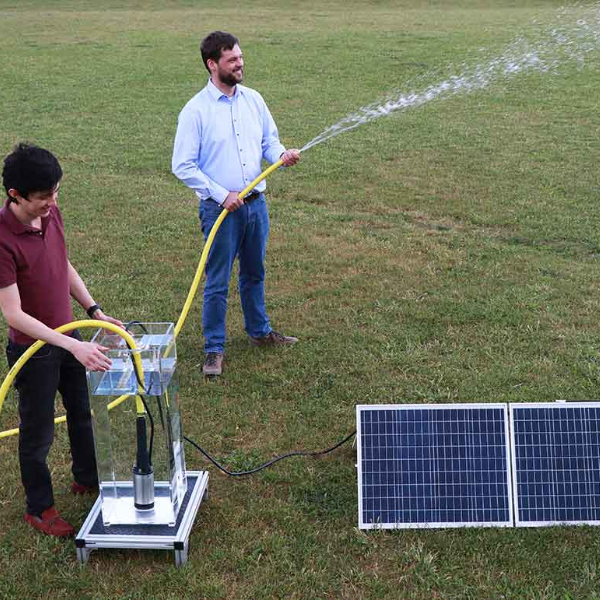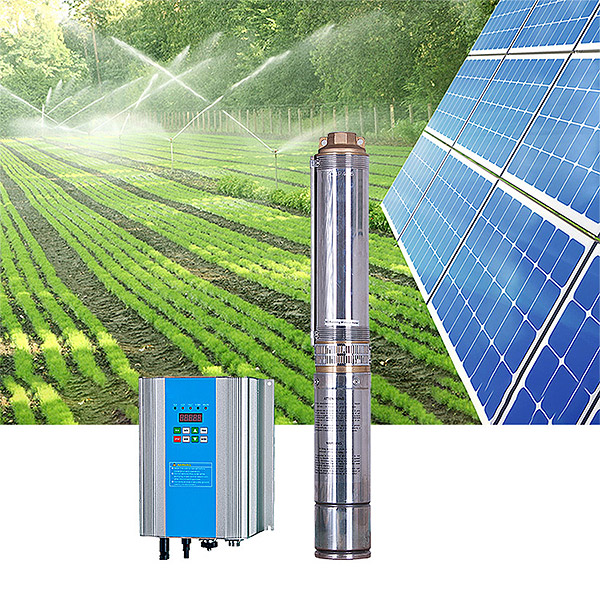A farmer harvests rice in the village of Dhundi in western India.Solar panels power his water pump and bring in extra income.
In 2007, 22-year-old P. Ramesh’s peanut farm was losing money.As was the norm in much of India (and still is), Ramesh used a mixture of pesticides and fertilizers on his 2.4 hectares of land in the Anantapur district of southern India.Agriculture is a challenge in this desert-like region, which receives less than 600mm of rainfall most years.
”I lost a lot of money growing peanuts through chemical farming methods,” said Ramesh, whose father’s initials followed his name, which is common in many parts of southern India.Chemicals are expensive, and his yields are low.
Then in 2017, he dropped the chemicals.”Since I’ve practiced regenerative farming practices such as agroforestry and natural farming, my yields and income have increased,” he said.
Agroforestry involves growing perennial woody plants (trees, shrubs, palms, bamboos, etc.) next to crops (SN: 7/3/21 and 7/17/21, p. 30).A natural farming method calls for replacing all chemical fertilizers and pesticides with organic matter such as cow dung, cow urine and jaggery (a solid brown sugar made from sugar cane) to boost soil nutrient levels.Ramesh also expanded his crop by adding papaya, millet, okra, eggplant (known locally as eggplant) and other crops, initially peanuts and some tomatoes.
With the help of Anantapur’s non-profit Accion Fraterna Eco-Center, which works with farmers who want to try sustainable agriculture, Ramesh added enough profit to buy more land, expanding his plot to about four. hectares.Like thousands of regenerative farmers across India, Ramesh has successfully nourished his depleted soil and his new trees have played a role in reducing India’s carbon footprint by helping to keep carbon out of the atmosphere. a small but important role.Recent research has shown that agroforestry has a carbon sequestration potential 34% higher than standard forms of agriculture.

In western India, in the village of Dhundi in Gujarat state, more than 1,000 kilometers from Anantapur, Pravinbhai Parmar, 36, is using his rice fields to mitigate climate change.By installing solar panels, he no longer uses diesel to power his groundwater pumps.And he’s motivated to only pump the water he needs because he can sell the electricity he doesn’t use.
According to a Carbon Management 2020 report, India’s annual carbon emissions of 2.88 billion tonnes could be reduced by 45 to 62 million tonnes per year if all farmers like Parmar switched to solar power.So far, there are approximately 250,000 solar-powered irrigation pumps in the country, while the total number of groundwater pumps is estimated at 20-25 million.
Growing food while working to reduce the already high greenhouse gas emissions from agricultural practices is difficult for a country that must feed what is about to become the world’s largest population.Today, agriculture and animal husbandry account for 14% of India’s total national greenhouse gas emissions.Add in the electricity used by the agricultural sector and the figure goes up to 22%.
Ramesh and Parmar are part of a small group of farmers who receive help from government and non-government programs to change the way they farm.In India, with an estimated 146 million people still working on 160 million hectares of arable land, there is still a long way to go.But the success stories of these farmers prove that one of India’s largest emitters can change.
Farmers in India are already feeling the effects of climate change, dealing with drought, erratic rainfall and increasingly frequent heatwaves and tropical cyclones.”When we talk about climate-smart agriculture, we’re mostly talking about how it reduces emissions,” said Indu Murthy, head of the division responsible for climate, environment and sustainability at the Center for Science, Technology and Policy Research, a US think tank.Bangalore.But such a system should also help farmers “to cope with unexpected changes and weather patterns,” she said.
In many ways, this is the idea behind promoting a variety of sustainable and regenerative farming practices under the agroecology umbrella.YV Malla Reddy, director of Accion Fraterna Ecological Centre, said natural farming and agroforestry are two components of the system that are finding more and more people in different landscapes in India.
”The important change for me is the change in attitudes about trees and vegetation over the last few decades,” Reddy said.”In the ’70s and ’80s, people didn’t really appreciate the value of trees, but now they see trees, especially fruit and utility trees, as a source of income.” Reddy has been advocating for sustainability in India for nearly 50 years agriculture.Certain types of trees, such as pongamia, subabul and avisa, have economic benefits in addition to their fruit; they provide fodder for livestock and biomass for fuel.
Reddy’s organization has provided assistance to more than 60,000 Indian farming families for natural farming and agroforestry on nearly 165,000 hectares.Calculations of the soil carbon sequestration potential of their work are ongoing.But a 2020 report by India’s Ministry of Environment, Forests and Climate Change noted that these farming practices could help India achieve its goal of achieving 33 percent forest and tree cover by 2030 to meet its climate change in Paris. carbon sequestration commitments under the Agreement.
Compared to other solutions, regenerative agriculture is a relatively inexpensive way to reduce carbon dioxide in the atmosphere.According to a 2020 analysis by Nature Sustainability, regenerative agriculture costs $10 to $100 per ton of carbon dioxide removed from the atmosphere, while technologies that mechanically remove carbon from the air cost $100 to $1,000 per ton of carbon dioxide.Not only does this type of farming make sense for the environment, Reddy said, but as farmers turn to regenerative farming, their incomes have the potential to increase as well.
It may take years or decades to establish agroecological practices to observe the impact on carbon sequestration.But using renewable energy in agriculture can quickly reduce emissions.For this reason, the non-profit International Water Management Institute IWMI launched a solar energy as a paid crop program in Dhundi village in 2016.

”The biggest threat to farmers from climate change is the uncertainty it creates,” said Shilp Verma, IWMI water, energy and food policy researcher.“Any agricultural practice that helps farmers cope with uncertainty will increase resilience to climate change. When farmers can pump groundwater in a climate-friendly way, they have more money to deal with unsafe conditions, It also provides an incentive to keep some water in the ground.”If you pump less, then you can sell the excess energy to the grid,” he said.Solar power becomes a source of income.
Growing rice, especially lowland rice on flooded land, requires a lot of water.According to the International Rice Research Institute, it takes an average of about 1,432 liters of water to produce one kilogram of rice.Irrigated rice accounts for an estimated 34 to 43 percent of the world’s total irrigation water, the organization said.India is the world’s largest extractor of groundwater, accounting for 25% of global extraction.When the diesel pump does the extraction, carbon is emitted into the atmosphere.Parmar and his fellow farmers used to have to buy the fuel to keep the pumps running.
Beginning in the 1960s, groundwater extraction in India began to rise sharply, at a faster rate than elsewhere.This was largely driven by the Green Revolution, a water-intensive agricultural policy that ensured national food security in the 1970s and 1980s, and which continues in some form even today.
“We used to spend 25,000 rupees [about $330] a year to run our diesel-powered water pumps. That used to really cut into our profits,” Parmar said.In 2015, when IWMI invited him to participate in a zero-carbon solar irrigation pilot project, Parmar was listening.
Since then, Parmar and Dhundi’s six farmer partners have sold more than 240,000 kWh to the state and earned more than 1.5 million rupees ($20,000).Parmar’s annual income has doubled from an average of Rs 100,000-150,000 to Rs 200,000-250,000.
That push is helping him educate his children, one of whom is pursuing a degree in agriculture — an encouraging sign in a country where farming has fallen out of favor among younger generations.As Parmar puts it, “Solar generates electricity in a timely manner, with less pollution and provides us with additional income. What’s not to like?”
Parmar learned to maintain and repair panels and pumps himself.Now, when neighboring villages want to install solar water pumps or need to repair them, they turn to him for help.”I’m glad others are following in our footsteps. I’m honestly very proud of them calling me to help with their solar pump system.”
The IWMI project in Dhundi was so successful that Gujarat started in 2018 to replicate the scheme for all interested farmers under an initiative called Suryashakti Kisan Yojana, which translates into solar energy projects for farmers.India’s Ministry of New and Renewable Energy is now offering subsidies and low-interest loans to farmers for solar-powered irrigation.
“The main problem with climate-smart agriculture is that everything we do has to reduce the carbon footprint,” said Verma colleague Aditi Mukherji, author of the February report of the Intergovernmental Panel on Climate Change (SN: 22/3/26, p. 7 Page).”That’s the biggest challenge. How do you make something with a low carbon footprint without negatively impacting income and productivity?” Mukherji is the regional project leader for solar irrigation for agricultural resilience in South Asia, an IWMI project looking at Various solar irrigation solutions in South Asia.
Back in Anantapur, “there has also been a noticeable change in vegetation in our area,” Reddy said.”Earlier, there might not have been any trees in many parts of the area before they were visible to the naked eye. Now, there is not a single place in your line of sight that has at least 20 trees. It’s a small change, but one that’s important to our drought. It means a lot to the region.” Ramesh and other farmers now enjoy stable, sustainable agricultural incomes.
”When I was growing peanuts, I used to sell it to the local market,” Ramesh said.He now sells directly to city dwellers through WhatsApp groups.Bigbasket.com, one of India’s largest online grocers, and other companies have started buying directly from him to meet the growing demand for organic and “cleaner” fruits and vegetables.
”I am now confident that if my children want to, they can also work in farming and have a good life,” Ramesh said.”I didn’t feel the same way before discovering these non-chemical farming practices.”
DA Bossio et al.The role of soil carbon in natural climate solutions.Natural sustainability.roll.3, May 2020.doi.org/10.1038/s41893-020-0491-z
A. Rajan et al.Carbon footprint of groundwater irrigation in India.Carbon Management, Vol.May 11, 2020.doi.org/10.1080/17583004.2020.1750265
T. Shah et al.Promote solar energy as a rewarding crop.Economic and Political Weekly.roll.52, Nov. 11, 2017.
Founded in 1921, Science News is an independent, not-for-profit source of accurate information on the latest news in science, medicine, and technology.Today, our mission remains the same: to empower people to evaluate news and the world around them.It is published by the Society for Science, a nonprofit 501(c)(3) membership organization dedicated to public participation in scientific research and education.
Subscribers, please enter your email address for full access to the Science News archive and digital edition.
Post time: Jun-02-2022




